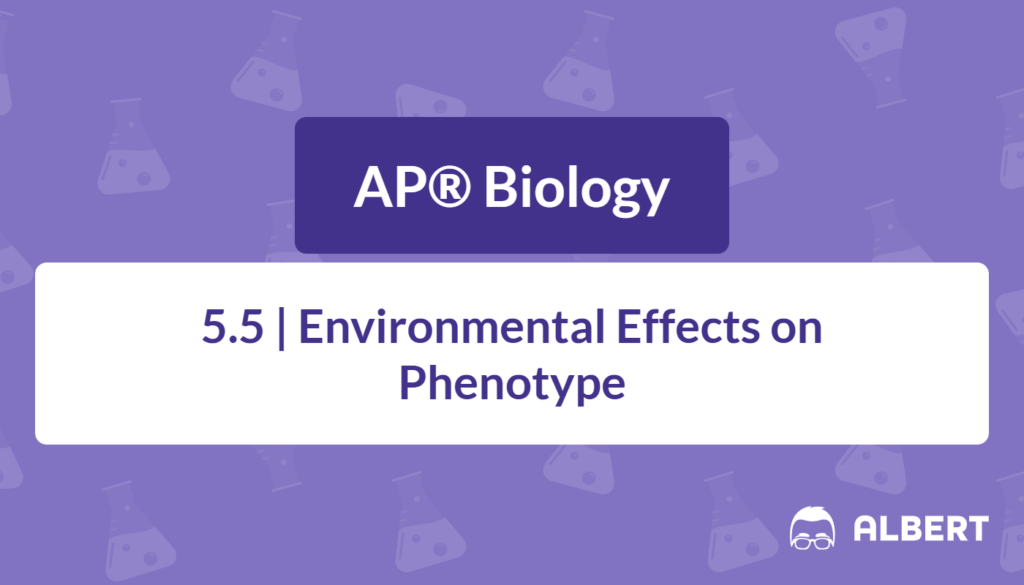What We Review
Introduction
Phenotypic plasticity is the ability of an organism to alter its physical or physiological traits in response to environmental conditions. It represents a dynamic relationship between an organism’s genetics and the external world, making it a crucial concept for students preparing for the AP® Biology exam. In this article, we’ll explore the core principles of phenotypic plasticity, examine how environmental factors shape phenotype, and discuss its evolutionary and real-world implications.
Defining Key Terms
A. What Is Phenotypic Plasticity?
- Phenotypic plasticity refers to the capacity of a single genotype (genetic makeup) to produce multiple phenotypes (observable characteristics) under different environmental conditions.
- Contrary to a fixed phenotype, where traits remain stable regardless of external influences, plasticity allows organisms to adapt quickly to changes.
B. Understanding Genotype vs. Phenotype
- Genotype is the genetic blueprint, comprising the alleles inherited from parents.
- Phenotype is the observable expression of these genes—everything from an organism’s coloration to its ability to tolerate environmental stresses.
- Example: A plant may have the genetic potential (genotype) to produce large leaves, but if grown in low-light conditions, it might grow leaves that differ in size, shape, or thickness (phenotype) compared to the same plant grown in bright light.

The Role of Environmental Factors
A. Exploring Environmental Effects on Phenotype
- The environment can regulate gene expression through various physiological pathways. Temperature, light, nutrient availability, and stress all play a role in shaping how certain genes are turned “on” or “off.”
- Example: Some reptiles have temperature-dependent sex determination. The same genotype can develop into different sexes, depending on incubating temperatures.
B. Factors That Contribute to Phenotypic Plasticity
- Biotic factors (e.g., presence of predators, competition) and abiotic factors (e.g., temperature, water availability) can both trigger plastic responses.
- Case study: Dandelions often grow in a variety of conditions. When space is ample, they can grow tall and spread out. In more crowded areas or harsher conditions, they might grow closer to the ground with smaller leaves and shorter stems—an adjustment to optimize survival.
Mechanisms Behind Phenotypic Plasticity
A. Genetic Basis of Plasticity
- Even though the genotype remains constant, different environmental signals can lead to varied phenotypic expressions.
- Epigenetics, such as DNA methylation or histone modification, can affect gene expression without changing the DNA sequence itself. These changes may be temporary or even passed on to offspring, depending on the organism and context.
B. Physiological and Developmental Mechanisms
- Organisms have sophisticated regulatory systems (e.g., hormone regulation, signaling pathways) that respond to environmental cues.
- During development, these cues can alter growth rates, enzyme production, and other factors that influence an individual’s physical traits. For instance, amphibians in environments with high levels of predators may develop faster to metamorphose sooner, thus minimizing exposure to predation.
Examples of Phenotypic Plasticity in Nature
A. Case Studies of Organisms
- Clonal organisms, like certain plants or some aquatic invertebrates, exhibit striking plasticity. Their clones, despite having the same genetic makeup, can appear very different if placed in varying environments.
- Dandelions are a common example of plasticity—they can adjust the shape and size of leaves based on nutrient levels and crowding.
B. The Adaptive Significance of Plasticity
- Phenotypic plasticity can enhance survival and reproductive success. By altering traits in real time, organisms can cope with sudden or extreme changes in their environment.
Implications of Phenotypic Plasticity
A. Evolutionary Perspectives
- Phenotypic plasticity can influence evolution by allowing organisms to survive in conditions that might otherwise be lethal. Over time, if certain plastic traits become favored, they may become genetically entrenched, shaping the evolutionary trajectory of the species.
B. Relevance to Current Environmental Issues
- Understanding phenotypic plasticity is increasingly important in the face of rapid climate change. Species that can adjust to new conditions may fare better, whereas those with limited plasticity could be at higher risk of extinction.
- Conservation efforts benefit from studying phenotypic plasticity, as it helps predict how populations might adapt (or fail to adapt) to future environmental pressures.
Practice Questions and Application
- Short Answer:
- Explain how temperature influences phenotypic plasticity in certain reptile species and provide an example of a trait that is impacted by temperature.
- Multiple-Choice:
- Which of the following statements best describes phenotypic plasticity?
- A. Alterations in the DNA sequence that lead to fixed traits.
- B. The ability of a single genotype to produce multiple phenotypes based on different environmental conditions.
- C. Traits that do not change regardless of environmental factors.
- D. Random modifications to an organism’s phenotype that occur during development.
- Which of the following statements best describes phenotypic plasticity?
B. Answers and Explanations
- Short Answer: In some reptiles, temperature affects the sex determination process. For example, certain crocodiles produce predominantly male offspring at one temperature range and females at another.
- Multiple-Choice: The correct answer is B. Phenotypic plasticity is precisely about how a single genotype can exhibit multiple phenotypes depending on its environment.
Conclusion
Phenotypic plasticity sits at the center of biology’s big questions—linking genetics, evolution, and the environment. By grasping its importance, AP® Biology students can better appreciate how organisms survive in changing ecosystems and how these adaptive responses might shape the future of life on Earth. Dive deeper into this fascinating topic to gain a solid foundation for your AP® Biology exam and beyond.
By reviewing the core concepts highlighted here, you’ll be well-prepared to tackle any phenotypic plasticity question on the AP® Biology exam. Good luck!
Sharpen Your Skills for AP® Biology
Are you preparing for the AP® Biology test? We’ve got you covered! Try our review articles designed to help you confidently tackle real-world math problems. You’ll find everything you need to succeed, from quick tips to detailed strategies. Start exploring now!
Need help preparing for your AP® Biology exam?
Albert has hundreds of AP® Biology practice questions, free response, and full-length practice tests to try out.








